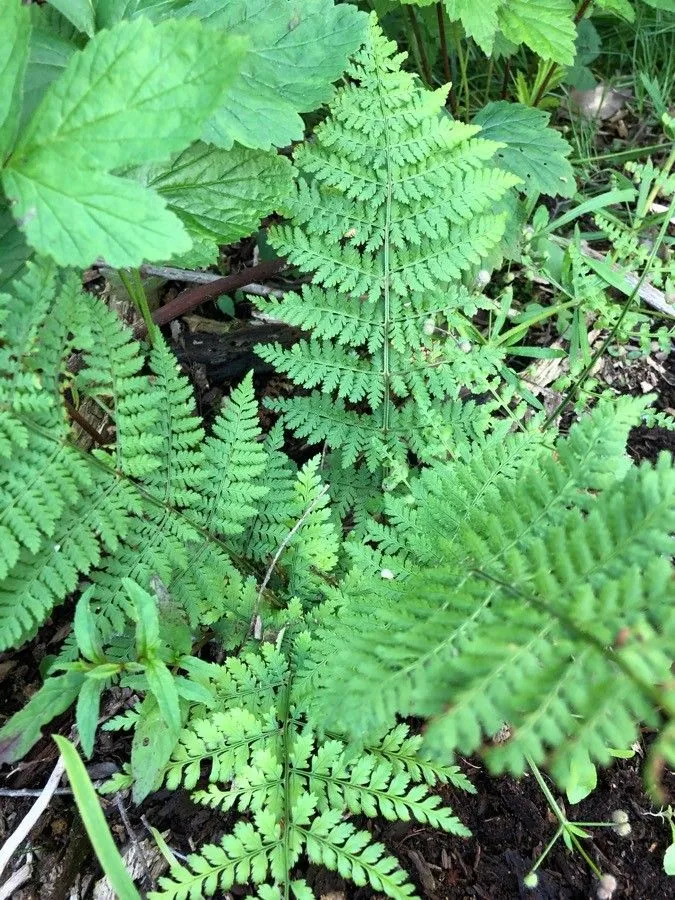
Author: A.Gray
Bibliography: Manual: 630 (1848)
Year: 1848
Status: accepted
Rank: species
Genus: Dryopteris
Vegetable: Unknown
Observations: E. Canada to NC. & E. U.S.A., Macaronesia
The Evergreen wood fern, known scientifically as Dryopteris intermedia, is a remarkable and hardy perennial that belongs to the Polypodiaceae family. This elegant fern is celebrated for its lush green foliage that remains vibrant throughout the year, making it a prized specimen in many gardens and natural landscapes.
Native to regions ranging from Eastern Canada down through North Carolina and extending across the Eastern United States, the Evergreen wood fern is a notable presence in the flora of these areas. Additionally, this fern has found its way to Macaronesia, an indication of its adaptability and resilience in diverse climatic conditions.
The plant was first officially documented in 1848 by the renowned botanist Asa Gray, who included it in his comprehensive manual of flora. This initial classification has facilitated subsequent studies and greater understanding of the species’ characteristics and ecological preferences.
Typically thriving in shaded, moist environments, Dryopteris intermedia boasts finely divided fronds that form an attractive, symmetrical rosette. The fronds are leathery and evergreen, providing a rich green color that persists even in the colder months, thus contributing to the plant’s common name. This makes it an exceptional choice for gardeners looking to add year-round greenery to their landscapes.
The Evergreen wood fern is not only appreciated for its aesthetic appeal but also for its ecological value. It plays a vital role in forest ecosystems, providing habitat and shelter for various small animals and insects. Moreover, its presence helps maintain soil health and prevent erosion, particularly in wooded areas where it most commonly occurs.
In cultivation, Dryopteris intermedia is relatively low-maintenance, requiring minimal care once established. It prefers moist, well-drained soil and can tolerate a range of soil types, although it thrives best in slightly acidic conditions. Gardeners should ensure that it is planted in a location with adequate shade to replicate its natural habitat.
In summary, Dryopteris intermedia, or the Evergreen wood fern, is a versatile and enduring fern that continues to enchant gardeners and botanists alike with its evergreen fronds and ecological importance. Its widespread presence across Eastern North America and Macaronesia underscores its adaptability and resilience, making it a valuable addition to both cultivated gardens and natural landscapes.
Eng: evergreen wood fern, fancy fern, intermediate woodfern, intermediate wood fern, american shield fern, common wood fern, evergreen shield fern, fancy wood fern, glandular wood fern
Fra: dryoptère intermédiaire
En: Evergreen wood fern, Fancy fern, Intermediate woodfern, American shield fern, Common wood fern, Evergreen shield fern, Fancy wood fern, Glandular wood fern, Intermediate wood fern
Fi: Hämyalvejuuri
Fr: Dryoptère intermédiaire
Taken Mar 5, 2022 by Valmir Rodrigues (cc-by-sa)
Taken Jun 19, 2022 by Karolane Lapointe Champagne (cc-by-sa)
Taken Jul 23, 2022 by Diane Okrongly (cc-by-sa)
Taken Jun 23, 2019 by Kevin Fahey (cc-by-sa)
Taken Nov 7, 2020 by kathy gilbert (cc-by-sa)
Taken Oct 16, 2019 by A.R. Johnson (cc-by-sa)
Taken Jan 1, 2012 by EOL − Ken-ichi Ueda (cc-by-nc-sa)
Taken Jan 25, 2015 by EOL − Erika Mitchell (cc-by-nc)
Taken Nov 29, 2022 by guinnevere lowe (cc-by-sa)
Taken Aug 22, 2013 by EOL − Robert L Curtis (cc-by-nc-sa)
Taken Feb 4, 2014 by EOL − Patti Smith (cc-by-nc)
Taken Apr 21, 2013 by EOL − Kent McFarland (cc-by-nc)
Taken Sep 6, 2022 by Laura Bonet (cc-by-sa)
Taken Nov 29, 2022 by guinnevere lowe (cc-by-sa)
© copyright of the Board of Trustees of the Royal Botanic Gardens, Kew.
Family: Myrtaceae Author: (F.Muell.) K.D.Hill & L.A.S.Johnson Bibliography: Telopea 6: 402 (1995) Year: 1995 Status:…
Family: Rubiaceae Author: Pierre ex A.Froehner Bibliography: Notizbl. Bot. Gart. Berlin-Dahlem 1: 237 (1897) Year:…
Family: Sapindaceae Author: Koidz. Bibliography: J. Coll. Sci. Imp. Univ. Tokyo 32(1): 38 (1911) Year:…
Family: Asteraceae Author: A.Gray Bibliography: Pacif. Railr. Rep.: 107 (1857) Year: 1857 Status: accepted Rank:…
Family: Fabaceae Author: Medik. Bibliography: Vorles. Churpfälz. Phys.-Ökon. Ges. 2: 398 (1787) Year: 1787 Status:…
Family: Aspleniaceae Author: (Cav.) Alston Bibliography: Bull. Misc. Inform. Kew 1932: 309 (1932) Year: 1932…